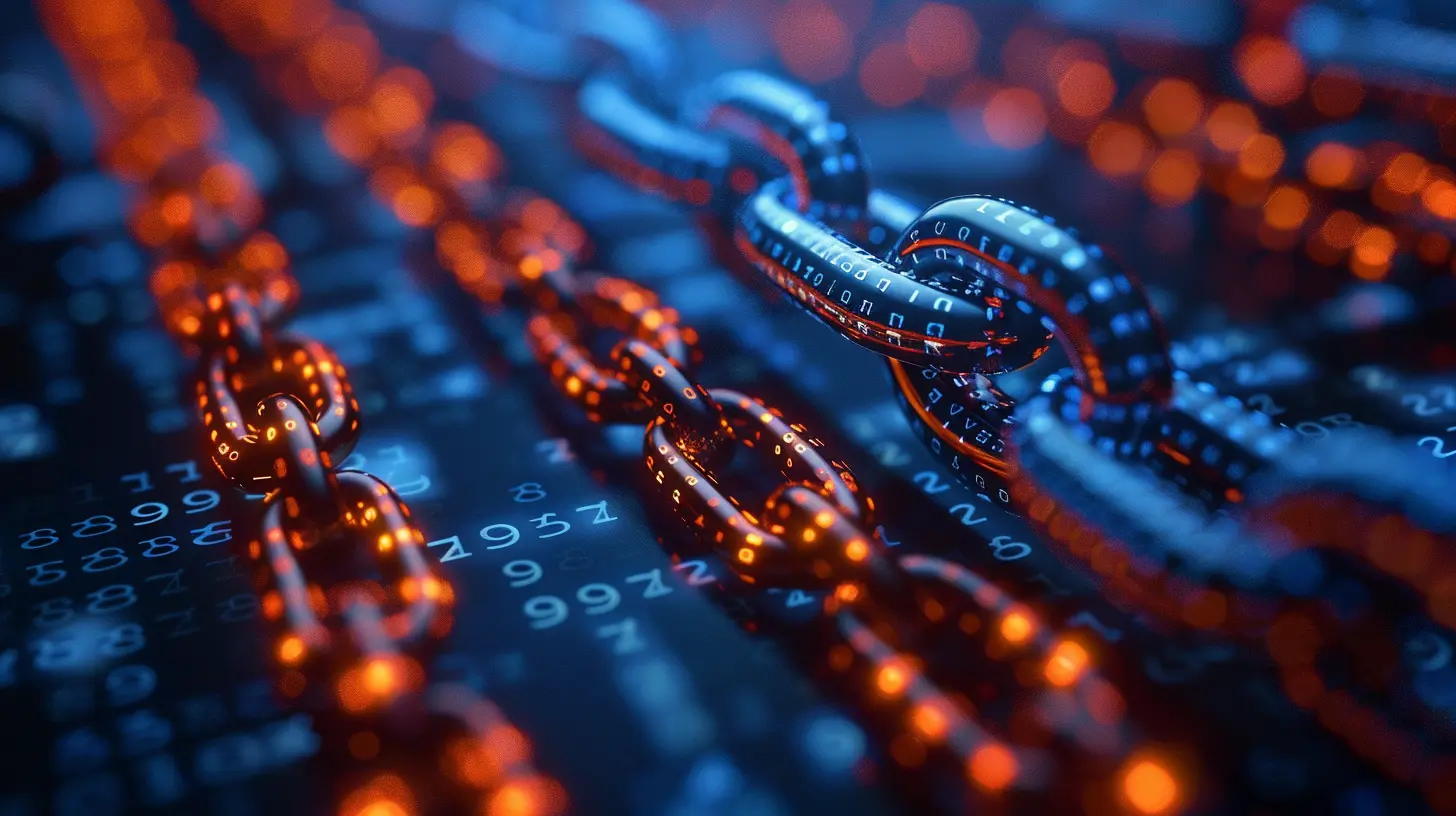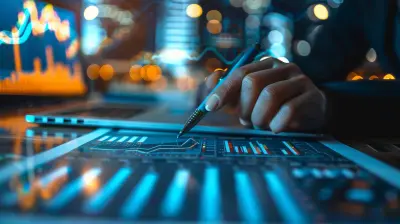How Blockchain is Helping Retailers Combat Counterfeit Goods
5 November 2025
The retail world has been under attack for years—by knockoffs, fakes, and straight-up scams. If you've ever ordered what you thought was a luxury handbag or a pair of exclusive sneakers only to receive something that felt suspiciously off, you're not alone. Counterfeit goods are a massive thorn in the side of both consumers and brands. But guess what’s stepping in to save the day? You got it—blockchain.
Now, before your eyes glaze over at the word “blockchain,” hang with me. We're not diving into crypto rabbit holes or talking about becoming Bitcoin millionaires. Nope, we’re unpacking how blockchain—this clever little tech—is becoming a retail superhero and helping businesses fight off the counterfeit crisis head-on.

What's the Big Deal with Counterfeit Goods?
Picture this: You're a brand that spent years building an image, creating quality products, and gaining loyal customers. Then suddenly, knockoffs start floating around—copies of your items, often with poor quality, being sold at cheap prices. What does that do? It damages your reputation, eats away your profits, and confuses your customers.According to the OECD, counterfeit and pirated goods represent over 3% of global trade. That’s hundreds of billions of dollars lost annually. And it’s not just designer bags and watches anymore. Fake medications, electronics, food products—you name it—are popping up in every sector.

So, Where Does Blockchain Step In?
Alright, let’s break it down as simply as possible.Think of blockchain as a digital ledger—a record book—but instead of one person holding it, it's shared across a network of computers. Once something is recorded on the blockchain, it’s practically set in stone. No erasing. No editing. Just pure, transparent truth.
So how does that help retailers? In a world drowning in fakes, blockchain offers something magical: traceability and authenticity.

1. Creating a Transparent Supply Chain
You ever wonder where your shirt came from? Like, really came from? Blockchain allows retailers to track every step of a product’s journey—from raw material to the store shelf.So instead of blindly trusting a label, retailers (and even customers) can verify a product’s origin and every hand it passed through along the way. It’s like giving each product its own digital passport.
Imagine scanning a QR code on a pair of Nikes and seeing the exact factory it was made in, the materials used, and the distribution path before it landed in your hands. That’s not sci-fi—it’s happening.
Real-World Example: IBM Food Trust
Major retailers like Walmart are already using blockchain to trace food sources. If it works for tracking lettuce from farm to fork, it sure can work for sneakers, handbags, and electronics. And the best part? It builds trust—the kind that customers today are craving.
2. Verifying Product Authenticity
Let’s say you’re buying a high-end watch. It looks legit, feels heavy, has all the bells and whistles—how do you know it’s real?With blockchain, the authenticity of that watch can be verified on the spot. Brands can embed tiny chips or QR codes in products, linking them to a blockchain record. When scanned, these give you the full history of the item, proving you’ve got the real deal.
It’s like giving each product its own fingerprint—impossible to replicate and easy to verify.
Real-World Example: LVMH’s AURA Blockchain
LVMH, the luxury group behind Louis Vuitton and Hublot, developed its own blockchain platform called AURA. It allows customers to trace the provenance of luxury goods, ensuring authenticity and giving buyers peace of mind. Talk about classy and tech-savvy.3. Empowering the Customer
You know what’s worse than buying a fake? Not knowing you bought a fake.With blockchain, customers can take control. They no longer have to depend on the retailer’s word or vague assurances. All it takes is a simple scan to check the legitimacy of what they’re buying.
This tech shift puts the power back in consumers' hands—and in the age of smart shopping, that’s a big deal.
Think of it like buying groceries with nutrition facts. You wouldn’t buy milk without checking the expiration date, right? So why would we buy a $2,000 handbag without verifying where it came from?
4. Ditching Paper Trails & Middlemen
Traditional authentication methods—certificates, receipts, barcodes—can be forged. Blockchain? Not so much.Once a product’s data is on the blockchain, it’s locked in. That means businesses don’t need to rely on third-party verifiers or complicated paperwork.
It streamlines the process, reduces costs, and makes things way faster. Plus, it helps cut out shady middlemen who might sneak counterfeits into the supply chain.
You ever played the game "telephone" as a kid, where the message got distorted by the time it reached the last person? That’s what traditional supply chains are like. Blockchain fixes that by keeping the message clear from start to finish.
5. Boosting Brand Image and Loyalty
Brands today aren’t just selling products—they’re selling stories, values, and trust.By using blockchain, retailers can prove they're serious about transparency and consumer protection. That’s not just good ethics—that’s good business.
Consumers are more likely to stay loyal to brands that are open and honest. And there’s nothing more honest than a tech that’s all about clear and tamper-proof records.
6. Fighting the Counterfeit Market at Its Roots
The fight against fakes isn’t just about one-off verifications. It’s about rebuilding the entire ecosystem from the ground up.When every legitimate product is on the blockchain, it becomes way harder for counterfeiters to sneak in their dupes. It creates a new standard—where “if it’s not on the blockchain, it’s not real.”
Sure, counterfeiters are clever. But blockchain is catching up. And with every scan, every recorded transaction, and every verified item, it’s tightening the noose.
Ok, But Is Blockchain Foolproof?
Good question. While blockchain is a powerful tool, it’s not a silver bullet.It depends heavily on people putting accurate data into the system in the first place. If someone lies at the entry point (say, claiming a fake item is real), then that false information gets locked in. Garbage in, garbage out.
But with stricter controls, verified participants, and better enforcement, these risks can be managed. And as the technology matures, the chances for manipulation shrink.
Think of blockchain as a super-secure lock. It works best when everyone’s using the right key.
What’s Next for Blockchain in Retail?
The future’s looking bright—and very digital.As more retailers get on board, we’ll likely see blockchain become a standard part of how products are tracked and sold. It’s not just luxury brands anymore; everyday items are also joining the blockchain revolution.
Tech companies are building smarter systems, regulators are getting involved, and consumers are demanding more transparency. It’s a perfect storm—and blockchain is riding the wave.
And who knows? In a few years, scanning a product for authenticity might be just as normal as checking the price tag.
Final Thoughts
Counterfeit goods aren’t just an inconvenience—they’re a multi-billion-dollar crime wave that hurts consumers, brands, and the global economy. But now, blockchain technology is changing the narrative.From supply chain transparency to real-time verification, it’s giving retailers powerful tools to protect their products and customers. And with shoppers becoming savvier every day, the demand for authenticity isn’t going anywhere.
So next time you buy something, ask yourself—can this be verified on the blockchain? If the answer’s yes, you’re probably in safe hands.
Because in a world full of copycats, blockchain is the truth serum retail has been waiting for.
all images in this post were generated using AI tools
Category:
Blockchain In BusinessAuthor:

Baylor McFarlin
Discussion
rate this article
1 comments
Chloe Morgan
Great insights! It's fascinating to see how blockchain technology is transforming the retail landscape by enhancing transparency and trust. Excited to see more retailers adopting this innovative solution!
November 6, 2025 at 5:56 AM

Baylor McFarlin
Thank you! I'm glad you found the insights valuable. The potential of blockchain in retail is indeed exciting and crucial for combating counterfeits.


